7 Sneaky Eczema Spots and How to Treat Them

Soothe Atopic Dermatitis All Over!
Little-known fact: Eczema, also known as atopic dermatitis, can occur wherever you have skin. So: anywhere. While you may typically think of it as a condition that affects your elbows, knees, back of the neck, and hands, it can pop up from scalp to tush. But don’t start scratching (that will make it worse!): We have simple solutions for every sensitive area.

No Matter Where You Have Eczema
There’s a universal rule for atopic dermatitis in any location: Moisturize, moisturize, moisturize! When you have eczema, your skin barrier is damaged, leaving skin drier and more vulnerable to baddies like allergens and irritants. Frequent hydrating can reinforce the barrier, helping to prevent moisture loss and decrease itchiness, says Marisa Garshick, M.D., a clinical assistant professor of dermatology at New York-Presbyterian/Weill Cornell Medicine in New York City.
A thick ointment (like Vaseline or Aquaphor) can help repair skin on any body part and also protect against external factors, says Dr. Garshick. Slick it on right after showering, when skin is slightly damp, so it will penetrate deeply. And don’t skimp! More = smoother skin and, ideally, fewer future flares. Hence, feel free to use such an ointment anytime, even when you’re not in the middle of an episode.

Face Eczema
Just when you’ve beaten the acne of your younger years, eczema comes and rears its annoying head. Eczema can appear in three phases on the face: The first is tiny little red bumps; the second is red patches with flakes; and the third, or chronic, phase may look like a leathery, wrinkled patch of skin. No matter which type you have, the following remedies should help.

Face Eczema: The Fix
First, swap your moisturizer for one that’s specifically formulated for eczema, like Eucerin Eczema Relief, says Francesca J. Fusco, M.D., an assistant clinical professor of dermatology at the Icahn School of Medicine at Mount Sinai in New York City.
Skin still pissed? Look for a low-potency cortisone cream (either 0.5% or 1%, found at drugstores). Cortisone is a topical steroid and a typical treatment for eczema because of its ability to reduce itching and redness. That said, slathering on cortisone for a long period of time can lead to skin thinning or even acne. Be sure to follow your doctor’s orders as to how often and how much to apply. In general, when a flare starts to chill out, wean off cortisone by reducing usage to every other day for a few days, then once a week, then stopping completely.
If you have eczema and rosacea or acne—cortisone is no friend to the latter two conditions—try a non-steroid prescription cream like Protopic or Elidel, which block specific inflammation chemicals that are seen in eczema.
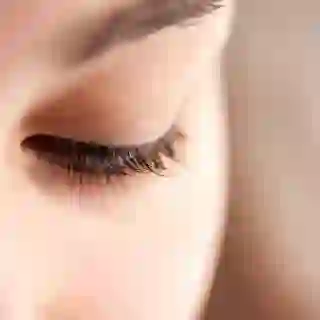
Eyelid Eczema
The skin around your eyes is one of the thinnest, most sensitive places on the body—and the eyelids, in particular, are at risk for developing rashes, known in dermatological speak as eyelid dermatitis. Which means: You gotta treat this zone with extra TLC.
If you develop eczema around the eyes or on your eyelids, the first (and best) thing to do is see an ophthalmologist.

Eyelid Eczema: The Fix
The ophthalmologist will likely give you a prescription for a gentle cortisone that has been proven safe for the eye area. Wear contacts? Check the label on the solution you use: It may contain ingredients that can cause irritation, like the preservatives thimerosal and benzalkonium chloride.
Also: Keep all your beauty products simple and free of harsh ingredients, as the eye area often reacts to stuff that isn’t even directly applied there, including shampoo, perfume, and hair dye, says Dr. Garshick. Look out for potentially irksome metals, such as nickel, which can be found in eyelash curlers and mascara. And with eye cream, choose one that is deeply moisturizing, such as Avène Soothing Eye Contour Cream, which contains uber-hydrator hyaluronic acid.

Scalp Eczema
It’s easy to forget that underneath that gorgeous head of hair lies the (often-neglected) scalp. Truth be told, being covered by hair makes treating it a little more challenging.

Scalp Eczema: The Fix
It’s all about that ‘poo: shampoo, of course! You want a fragrance-free, sulfate-free, hypoallergenic formula to minimize bothersome ingredients on the scalp. Free & Clear and Exederm shampoos fit the bill: Neither contains dyes, formaldehyde, parabens, or cocamidopropyl betaine, all of which can cause inflammation.
If switching shampoos doesn’t help, consider cortisone in a foam or solution base; these work well for hairy areas since they’re less messy than creams and ointments, says Dr. Fusco. For an extreme case of flakes, however, you may need a prescription cortisone oil; before bed, apply it all over your scalp and sleep in a shower cap to help melt away the buildup.

Ear Eczema
In addition to being one of those spots that suffers from sunscreen neglect (guilty as charged!), your ears are often overlooked on the eczema front. But don’t ignore flakes or redness there; eczema can actually affect the entire ear, from the outer part into the canal—the latter can result in skin loss, soreness, or infection.
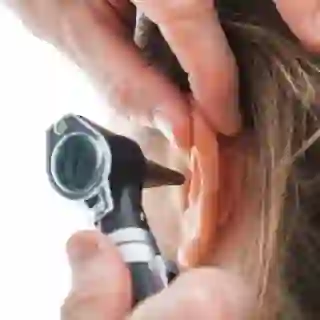
Ear Eczema: The Fix
If you see anything out of the ordinary, visit an ear, nose, and throat doctor, who can determine whether the ear canal is involved and provide a prescription-strength cortisone that is safe for use in and on the ears. Protopic or Elidel can be used on the outer ear.
Note: Sometimes, redness and dryness on the ear is not eczema but seborrheic dermatitis, typically a greasier, less-dry type of scaling or flaking. In this case—and you’ll likely need to confirm this with a dermatologist, since it’s hard to tell on your own—an antifungal shampoo, such as Ketoconazole, can be helpful, says Dr. Garshick.

Butt Eczema
The butt is a tricky spot to treat: Unless your neck has the turning radius of an acrobat, it’s hard to see what’s going on back there! You may want to visit a dermatologist to confirm that what you are feeling is eczema before attempting to treat it with a topical cortisone cream. Yeast infections and psoriasis can look similar, says Dr. Fusco, and using a cortisone cream on yeast or fungus could potentially make things worse.

Butt Eczema: The Fix
If it is eczema, your soap or body wash may be stirring up problems. The best option is a non-abrasive cream cleanser, such as Dove Sensitive Skin Body Wash or Aveeno Body Wash; avoid harsh soaps, which can strip the skin of its natural oils, says Dr. Garshick. Prefer a bar? Try the Dove Beauty Bar, a soap-free classic that hydrates while cleaning, since a full one-fourth of the formula is moisturizer.

Breast and Vaginal Eczema
Both the breast and nipples, and vagina and vulva, are (as you know!) extremely sensitive, so “gentle” is the key word when treating eczema here.
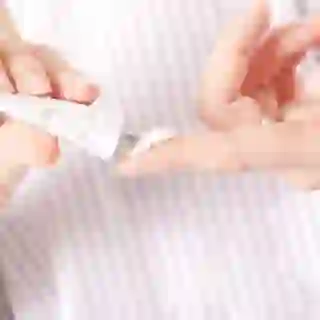
Breast and Vaginal Eczema: The Fix
Choose a mild .5% topical cortisone and use a dab the size of a pea for the breast/nipple area, and a blueberry or marble for the vagina. Apply it no more than twice daily for up to one week. At that point, if you’re not seeing a difference, set up a dermatologist appointment, says Dr. Garshick.
Regarding the genital region specifically, excess cortisone can also increase the risk of getting a yeast or fungal infection; as a warm area that accumulates moisture, it’s already predisposed to these types of infection. If cortisone is causing issues, you can instead apply a soothing ointment, such as Vaseline or Aquaphor, to provide a barrier that minimizes further irritation.

Penis Eczema
Men aren’t off the hook—the penis can get eczema too. Since that skin is thin, it can be prone to dryness, redness, and flaking.
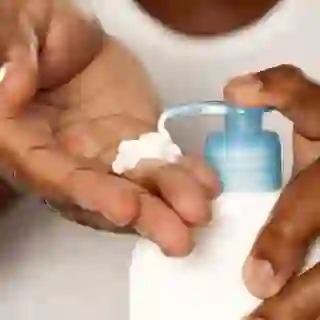
Penis Eczema: The Fix
Treat it with a moisturizing cream, such as CeraVe, or an ointment, and if that doesn’t work, a lower-dose topical steroid cream for a limited time, as per your doctor. You should also wear loose, cotton underwear that isn’t constrictive, advises Dr. Fusco. In other words, boxers!
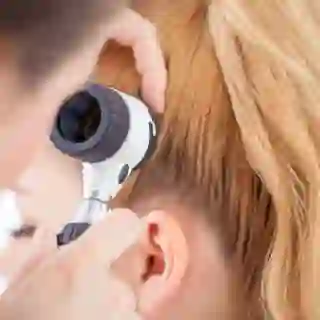
Is It Really Eczema?
It’s worth repeating that other skin conditions—such as yeast and fungal infections, psoriasis, and herpes—and certain ingredient allergies can sometimes look like eczema, so you want to make sure what you have is truly eczema.
Dr. Fusco recommends patch testing at a dermatologist’s office to identify anything that you could be allergic or hyper-sensitized to. If your physician finds that you do have an allergy to a specific ingredient, she can provide a comprehensive list of products that don’t contain it.